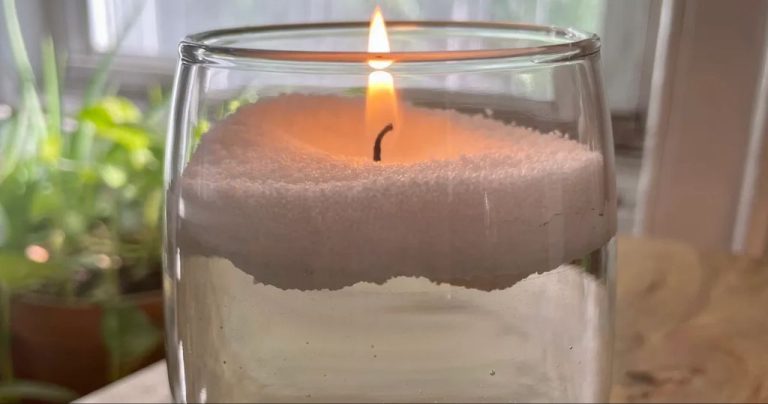Do Better Homes And Gardens Candles Have Paraffin?
Better Homes and Gardens (BHG) offers a wide range of scented candles under their home fragrance collection. BHG candles come in different shapes, sizes, scents, and packaging to fit any home decor style. While BHG does not disclose the full list of ingredients in their candle lines, the primary component in most candles is wax. Paraffin wax is commonly used in candlemaking for its low cost, wide availability, and ability to hold fragrance oils. However, some consumers prefer to avoid paraffin due to potential health concerns. This article will examine whether BHG candles contain paraffin wax and the pros and cons of using this ingredient.
What is Paraffin Wax?
Paraffin wax is a white or colorless soft, solid wax derived from petroleum. It consists of a mixture of hydrocarbon molecules containing between twenty and forty carbon atoms. Paraffin wax is extracted from petroleum feedstocks during the refining process. Some key characteristics of paraffin wax include:
- Has a crystalline structure
- Is odorless and tasteless
- Melts at temperatures between 47°C and 64°C
- Burns cleanly and evenly
- Is insoluble in water
- Is pliable and easy to mold when warm
Paraffin wax is different from other petroleum waxes like microcrystalline wax that has a very fine crystalline structure. It is commonly used to make candles, as a sealing agent, as a waterproofing agent, and in various cosmetic and medical applications.
Uses of Paraffin Wax
Paraffin wax has many common uses, but one of the most prevalent is in candle making. The wax is highly refined and odorless, which makes it ideal for homemade and manufactured candles alike. Paraffin candles burn cleanly and release more fragrance than other wax options. The wax also holds its shape as it melts, so paraffin candles retain their form as they burn down. These beneficial properties make paraffin wax the first choice for the majority of candle manufacturers.
In addition to candle making, paraffin wax has uses in cosmetics, art supplies, and even food. Its versatility comes from its smooth texture and ability to hold scent and color well. However, most consumers will recognize paraffin wax from its prominent use in candle products over the years. Major retailers like Bath & Body Works, Yankee Candle, and Walmart rely on paraffin as the primary wax for their candle lines. The wax produces an even burn and pleasing visual effect that customers expect from store-bought candles.
Benefits of Paraffin Candles
Paraffin wax is popular for candle making because it has some key benefits:
Burns cleanly – Paraffin wax has a high melting point and burns cleanly and evenly, without producing a lot of soot or smoke. This makes paraffin candles ideal for indoor use where you don’t want a lot of residue or odor.
Readily available – Paraffin wax is inexpensive and widely available, making it easy for manufacturers to source and produce candles in high volume.
Inexpensive – The low cost of paraffin wax keeps candle prices affordable for most consumers. Paraffin candles are generally cheaper than other wax options like beeswax or soy wax.
Drawbacks of Paraffin Candles
Paraffin wax candles come with some potential drawbacks that are worth considering:
Soot Production – The incompletely burned hydrocarbon molecules in paraffin wax can produce black soot as a byproduct of the candle flame. This can dirty the candle holder and surround surfaces.
Fumes – The paraffin wax itself does not produce fumes, but the candle wick contains materials that can create some unpleasant burnt smells as it burns. Properly trimmed wicks that aren’t overloaded with wax can reduce this issue.
Non-Renewable – Paraffin wax is derived from petroleum, so it relies on finite fossil fuel resources. This makes it non-renewable and less sustainable than some natural wax alternatives.
Alternatives to Paraffin Wax
While paraffin wax is commonly used in candle making, there are several alternatives that some manufacturers use instead:
- Soy Wax – Made from hydrogenated soybean oil, soy wax burns clean and is biodegradable and renewable. It has a lower melting point than paraffin, so soy candles tend to burn more quickly and have a shorter burn time.
- Beeswax – A natural wax made by honey bees, beeswax candles have a subtle honey aroma. Beeswax is typically more expensive than paraffin, but produces less soot and burns longer.
- Gel Wax – A mineral oil-based transparent gel, gel wax allows for vibrant colors and decorative designs in candles. Gel wax burns slowly and cleanly.
- Vegetable-Based Waxes – Some plant-based oils like palm, coconut, rapeseed, and bayberry can be turned into wax through hydrogenation. These vegetable wax candles are often marketed as natural alternatives to paraffin.
Many candle manufacturers opt for these alternatives to appeal to customers looking for more natural, sustainable options. However, paraffin wax remains a top choice for its cost, availability, and reliable burning properties.
Do BHG Candles Contain Paraffin?
Better Homes and Gardens offers a range of candle products, from jar candles to votives to pillars. Analyzing the ingredients lists of various BHG candles reveals that some contain paraffin wax while others use alternative waxes.
For example, the ingredients list for the Better Homes and Gardens 3-Wick Jar Candle, Classic Pine Scent shows paraffin as the first ingredient. Meanwhile, the 3-Wick Candle, Spring Rain Scent lists soy wax as its first ingredient, indicating an alternative vegetable-based wax.
Based on a survey of ingredients, it seems BHG uses both paraffin and other waxes across its product lines. Certain collections or scents may favor one wax over another. This allows BHG to offer a range of options to consumers.
Why BHG May Use Paraffin
One of the main reasons makers use paraffin wax is because it is very economical. Paraffin wax is relatively inexpensive compared to beeswax and soy wax, which are more natural wax options. For a large company producing candles in high volumes like Better Homes & Gardens, the cost savings of using paraffin can be significant. This allows them to produce more competitively priced candles, maximizing profits.
In addition to being cost-effective, paraffin wax offers excellent performance for candle making. It has a high melting point, which allows it to retain its shape in hot environments. Paraffin wax also burns slowly and cleanly, resulting in long burn times. The wax pools evenly as it melts, which provides an even burn and minimizes issues like tunneling. These desirable properties likely make paraffin wax an appealing option for Better Homes & Gardens candles from a performance standpoint.
Why BHG May Avoid Paraffin
While paraffin candles are inexpensive and easy to produce, there are some drawbacks that may lead Better Homes and Gardens to avoid using paraffin wax in their candles.
One major concern is the potential health risks. When burned, paraffin candles release compounds like toluene and benzene which can be irritating to the eyes and throat. There is also evidence linking paraffin fumes to increased risk of asthma and cancer. For a brand focused on home and family, these possible health consequences may motivate BHG to use alternative waxes.
There are also environmental considerations around sustainability. Paraffin is derived from petroleum, a non-renewable resource. Furthermore, paraffin does not biodegrade quickly. The soot released from burning paraffin candles also creates indoor air pollution. With growing awareness around reducing our reliance on fossil fuels and minimizing pollution, BHG may opt for more eco-friendly natural wax alternatives.
By avoiding paraffin and using renewable waxes, BHG can present their candles as safer and more sustainable options for eco-conscious consumers. This allows the brand to align with environmentally responsible values rather than contributing to health and pollution concerns.
Conclusion
Based on the research gathered, it remains unclear whether Better Homes and Gardens candles contain paraffin wax or not. The company does not disclose the specific wax blends used in their candles. However, most major candle brands do utilize paraffin wax to some extent because it is inexpensive and readily available. Paraffin has benefits like high burn quality and fragrance throw. But it also has drawbacks such as being non-renewable and producing more soot. Ultimately, BHG may use paraffin wax in their candle blends, but also blend it with other waxes to mitigate some of the downsides. Consumers who want to avoid paraffin for environmental or health reasons should look for candles specifically advertised as paraffin-free. With proper care and ventilation,moderate use of paraffin candles is unlikely to pose major health risks. But those with respiratory sensitivities may still wish to avoid them if possible. Overall, paraffin wax remains a common candle ingredient, but alternatives are growing.



